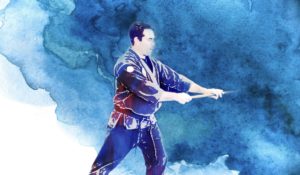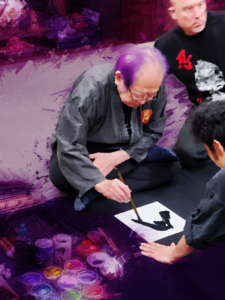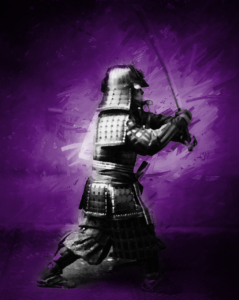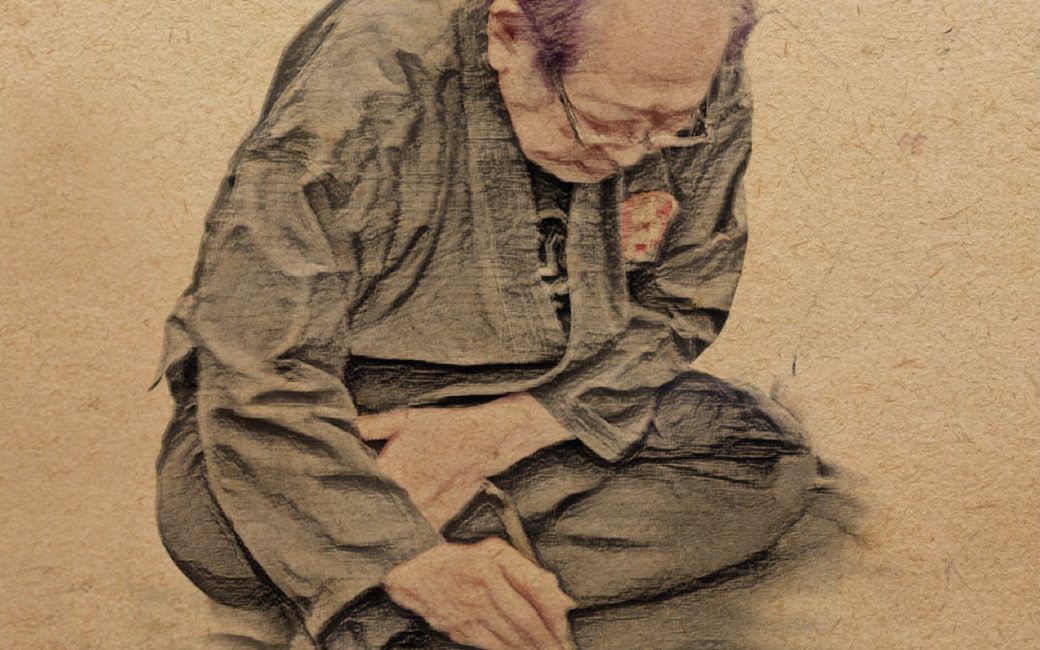 By Dai Shihan Mark Roemke
By Dai Shihan Mark Roemke
In our last blog, we interviewed Sheila Haddad, who not only is an amazing martial artist, but also a highly talented photographer. The Grandmaster of of ninjtusu, Masaaki Hatsumi, is another example of a martial artist who expresses themself through creative arts.
One of my favorite parts about going to Japan has been watching Hatsumi Sensei, do his calligraphy. He typically does this at break time during one of his Bujinkan classes. His calligraphy is not only an expression of his art with a brush, but also an expression of his martial art.
 For those who haven't been to the hombu dojo (headquarters) in Nodashi, Japan, whenever Hatsumi teaches, about half way through the class, he will take a break. When this happens, students form a big line in the dojo, each holding a blank scroll or piece of blank calligraphy paper. An instructor then brings out paints, brushes and ink. Hatsumi Sensei will then do individual calligraphy or paintings for everyone waiting in line. Even better, he usually takes requests for his art.
For those who haven't been to the hombu dojo (headquarters) in Nodashi, Japan, whenever Hatsumi teaches, about half way through the class, he will take a break. When this happens, students form a big line in the dojo, each holding a blank scroll or piece of blank calligraphy paper. An instructor then brings out paints, brushes and ink. Hatsumi Sensei will then do individual calligraphy or paintings for everyone waiting in line. Even better, he usually takes requests for his art.
As you hand your paper to him, a translator will ask, "What would you like him to paint?"
One of the things I observed when Soke painted was this—when a person asked him to paint a specific thing, or when they handed him their blank paper and said,"paint whatever you want," he often paused to look at the person. It seemed as if he looked at them with what we call "owl eyes" or peripheral vision. Then, he put brush to paper.
Or, if someone asked him to draw something for their son or their daughter, he painted beautiful characters such as wild animals or nature scenes. I once requested a painting for my son Austin, and he painted an amazing lion for him.
After watching Soke practice his art, I learned that calligraphy is an expression of sword work. It is also a spiritual connection to the brush. I've watched Hatsumi Sensei do this on every trip I have made to Japan. I have paid close attention to how he uses his calligraphy brush. Sometimes when he paints fast, it seems as if he was doing a blessing onto the paper. Sometimes it feels like he is doing a kuji-in or protection grid, as he does before class using his "sword fingers" to create a safe training space.
 There are so many amazing things about watching Soke wield a brush as the Grandmaster, as a martial artist, and as an artist. His art is an extension of who he is. His books and the walls of the Hombu dojo are filled with his paintings. His art also hangs on the walls of my home and in every one of my dojos.
There are so many amazing things about watching Soke wield a brush as the Grandmaster, as a martial artist, and as an artist. His art is an extension of who he is. His books and the walls of the Hombu dojo are filled with his paintings. His art also hangs on the walls of my home and in every one of my dojos.
I appreciate that ninjutsu is deep and has roots that are not only martial, but also incorporate the art of the brush. This helps me to become more well rounded as a martial artist.
********
Pathways Dojo is fortunate to have Megumi Sensei who teaches Shodo (the art of calligraphy) occasionally for us. Below is a short video where she teaches how to draw the kanji for "nin" which means "perseverance” and is part of the word ninja.
